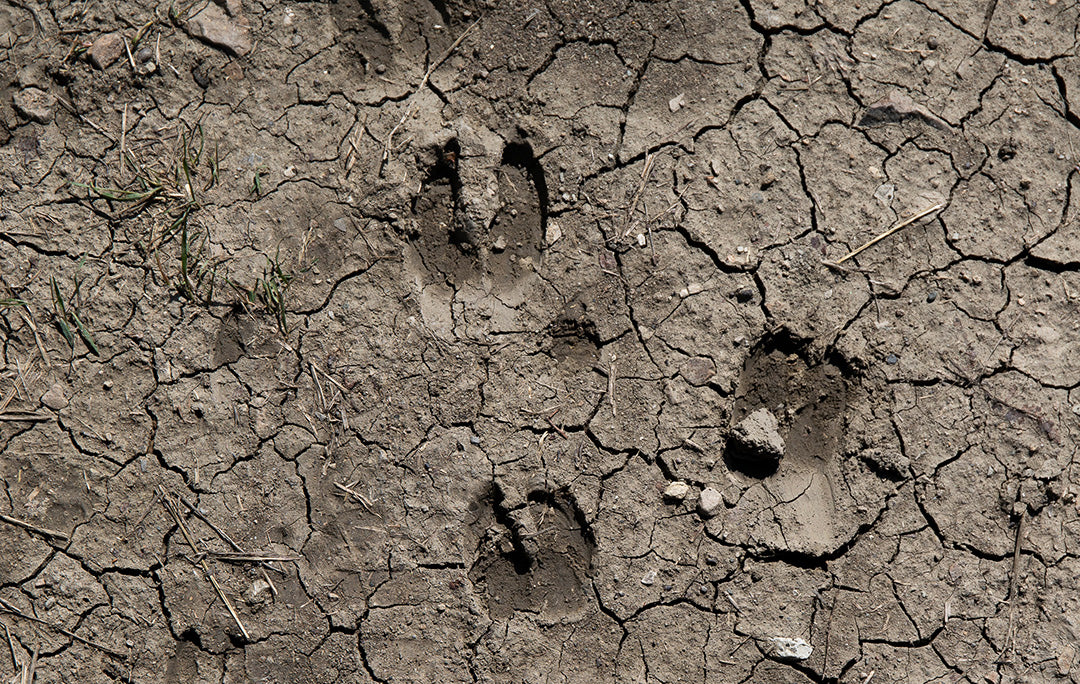There is no doubt that growing food plots is gaining popularity each and every year as hunters want to step up their game for better hunting and better heard health. With working trade shows and helping food plot customers on the phone, there is always one question that’s get brought up by food plotters from Texas to Michigan and everywhere in between, and that is “What food plot can I grow in my sandy soil?”. Sandy soil conditions can be a factor no matter what state you live in as there are pockets of sandy soil in each and every state. The soil that your food plot grows from is instrumental to the plot’s success. Planting food plots on sandy soils may have a few hurdles, but don’t worry. They can still be done!
To first understand what the best food plot on sandy soils is, it’s important to understand why sandy soils can be hard to grow on in the first place. The biggest issue when it comes to sandy soils is the lack of holding capacity of both water and nutrients. Sand is composed of larger particles than both silt and clay, so that means that there is more space between the soil particles for both air and water. That sounds great, right?! Well, the issue is that the sand particles have a low surface tension meaning that they can’t hold onto the water (this has to do with the surface area of the particles, but I won’t bore you with that), and the water continues to seep down through the sand past where the roots can reach it. That leads to the next issue with sandy soils, and that is a lack of nutrients that the plants need to grow. Sand lacks nutrients because as the water seeps through the soil and keeps on going, it takes the nutrients with it. The smaller particles of silt and clay can hang onto those nutrients, but sand cannot. This process is called leeching, as it drains the sand of its nutrients.
Now that we understand what factors limit growth in sandy soils, we can go in and match the correct forages that overcome those limitations. With the lack of water-holding capacity, it is important to have a plant that has a long root system that can reach down deeper in the soil profile to retrieve water or a plant that doesn’t have high water needs. That narrows the forages down to chicory, alfalfa, red clover, and cereal grains. I would recommend staying away from brassicas as they have a higher water requirement that may not be able to be met in sandy soils. I want to make it clear that just because there are limited options of what you can grow in your sandy soil doesn’t mean that you are compromising deer attraction or nutrition, as all of these varieties are top-notch deer forages. Some of our products that contain these sandy soil suited species are Alfa Feast, Champion Chicory, Rackup Red Clover, and Max Attract. Alfa Feast consists of alfalfa, red clover, and chicory. All three of these species are suited for well-drained soils as they grow longer roots that allow for better water uptake. Max Attract is also great for those sandy soils, and it is composed of a couple of cereal grains, winter peas, clovers, and chicory.
These are all great food plot options when it comes to planting on sandy soils, but it’s always important to try to improve your soils as well. As I mentioned before, sandy soil doesn’t hold very many nutrients, so it will be important to take care of your pH and fertilize it to give the plants the nutrients that they need during the growing season. As the years go on, you may be able to decrease the amount of fertilizer added by improving the soil. The big factor missing in sandy soils is organic matter. Organic matter is carbon-based compounds from the decomposition of plants and animals. Organic matter not only provides nutrients to the plants but also works as a glue to hold water and nutrients in the soil, allowing for easy access by the plants. You can increase the organic matter by bringing in different byproducts, such as livestock manure, or you can increase the organic matter by using the foliage grown in your food plots. Whatever the deer didn’t consume, instead of tilling it into the ground, leave it on the surface of the soil to slowly break down. It seems a little counterintuitive, I know. You would think you would want the leftover plant remains to go into the soil by tilling it in, but what that does is allow more air into the soil which will break down the organic compounds faster, depleting them from the soil. Instead, you want to look at going to a no-till method, which allows the plant material that is in the food plot to lay on the surface of the soil and slowly break down to build that layer of topsoil. Not to mention that the no-till method will help the germinating seeds as the plant residue holds in valuable moisture, which we know can be hard to come by in sandy soils.
Overall, don’t let sandy soil crush your dreams of having a successful food plot! Just pick food plot blends that contain species that grow well in the sand, and practice food plot methods that will help your soil improve over time.












This is my first year with sandy soil, due to getting a new lease outside of Llano, TX. I will have to clear out some cactus, mesquite bushes, and other bushes full of thorns. So should I not till anything even though it’s the first time. I haven’t done soil samples yet so I don’t have the ph information yet. Thank you for your help.
———
Tecomate replied:
Lane Hilgenhold Tecomate Wildlife Systems Sales Representative | Agronomist (812) 608-2313 Tecomate.com [cid:image001.jpg@01DA47C9.6A703CB0]
Leave a comment